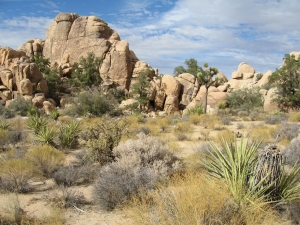From the Disabled Travelers Mailbag: Wheelchair Accessible National Parks
Posted April 27th, 2010 in access guides, helpful information and Wheelchair Accessible AttractionsWelcome one and all to the Disabled Travelers blog. Today we’ll be hitting the trail and talking about wheelchair accessible national parks. From coast to coast, there’s about 200 million acres of national park land, including national forests, national recreation areas, and a variety of other sites. Recently, the National Park Service has led the charge to make these areas more accessible for handicapped travelers and ensure everyone can enjoy this pristine public land. Let’s go for a tour …
Even though there are disability access initiatives across all parks, some are definitely better than others. The more developed and more popular a park is, the more likely it is that it’s received the funding and workforce necessary to make accommodations; this is a particularly intensive process in parks, since it’s very important not to disturb the natural landscape. So, while not all national parks are made equal, you can bet the effort is there.
The National Parks Service provides a useful access guide, “National Parks: Accessible to Everyone”, that covers a huge amount of information. The parks determined by NPS to be stand-out examples of accessibility are indexed here along with their features. There are separate sections for accessible trails, vistas, and more. There are also areas set aside to discuss parks with special features for hearing or sight-impaired visitors.
No matter where you go for your national park experience, you need to know about the Access Pass. This special pass allows those with a permanent disability to enjoy federal parks free of charge, waiving fees normally charged for entrance or camping with standard amenities. There’s also a deep discount for campsites with “expanded amenities”, where available. On top of that, the Access Pass is endorsed by a number of other federal agencies and may have other benefits. Check Recreation.gov, the online repository for reserving federal camp grounds, for more info.
Also at Recreation.gov, you can search parks and campsites around the U.S. with a comprehensive database that will also bring up accessible sites. Try National Parks Traveler for more general tips on making your park visit easy and fun. If you want to expand your outdoor adventure to other kinds of camps and wilderness areas around the country, try AllCampgrounds, a stellar resource for planning camping trips and finding out more about places to visit in the outdoors. AllCampgrounds includes entries on national parks, state parks, and privately owned camps.
Now for the big question: Which are the best wheelchair accessible national parks?
If it’s your first time going to any national park, you can’t go wrong with the most famous one of all, Yellowstone National Park in Wyoming. Check out this third-party access guide for details, or visit the official NPS Yellowstone site. There’s also Everglades National Park in Florida, Smoky Mountains in the Appalachians, and, of course, Grand Canyon National Park.
Note that some of the above information is provided by tour operators who, while not specializing in disabled guests, definitely have the inside scoop as far as park facilities and local attractions go. For a tour operator focused on disabled needs, click to Access Tours, which maintains a variety of park and outdoor tours in the American west.
With so much parkland in the U.S., it would take quite a while to document the quirks and features of every site. Hopefully, though, you now know that the access outlook on public land is bright and getting better, and you have the resources to find the right wheelchair accessible national parks for your next camping trip. Enjoy the wide world outside, and adventure on!
Si

